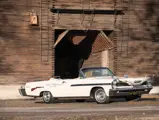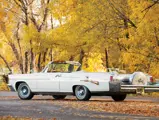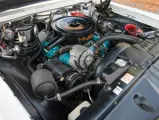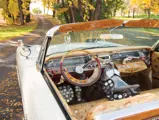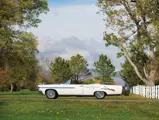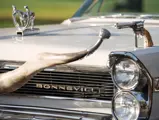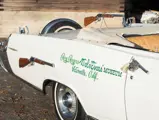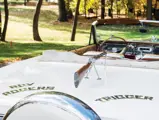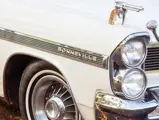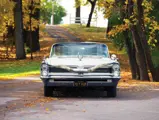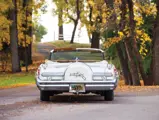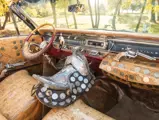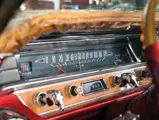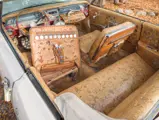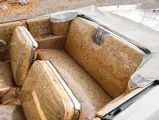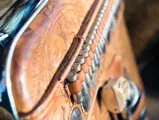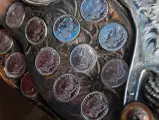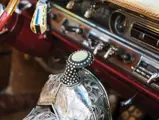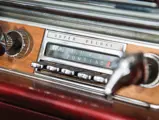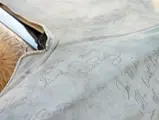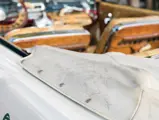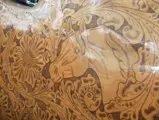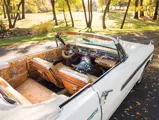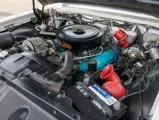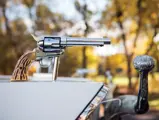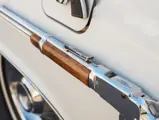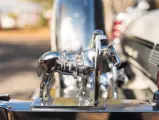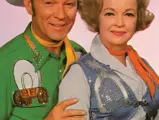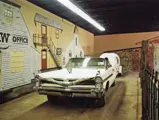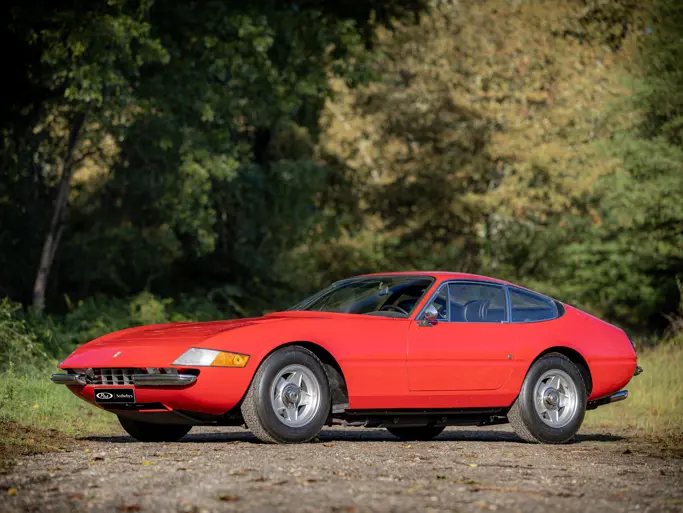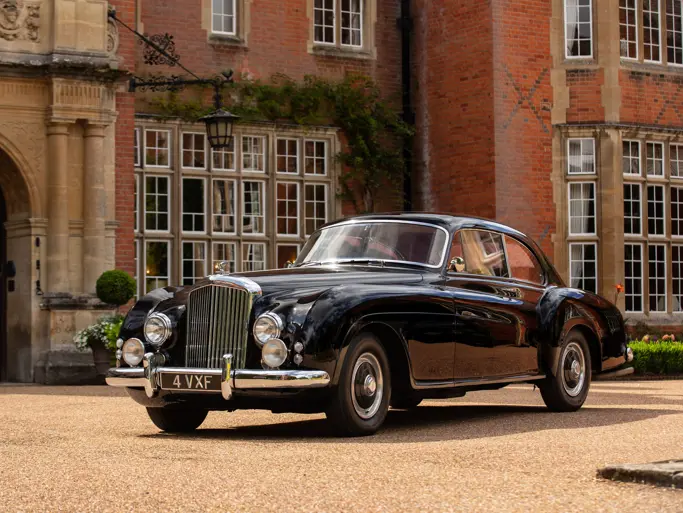New York - Driven By Disruption 2015
1963 Pontiac Bonneville "Roy Rogers" Nudie Mobile
{{lr.item.text}}
$308,000 USD | Sold
 | New York, New York
| New York, New York
{{internetCurrentBid}}
{{internetTimeLeft}}

- The ultimate statement of Nashville haute couture
- Purchased from “Nudie the Rodeo Tailor” by Roy Rogers
- Part of the Roy Rogers-Dale Evans Museum for over 45 years
- One of very few Nudie Mobiles in private ownership
303 bhp, 389 cu. in. OHV V-8 engine with four-barrel Carter carburetor, four-speed Hydra-Matic automatic transmission, independent coil-spring front suspension, leaf-spring rear suspension, and four-wheel power-assisted drum brakes. Wheelbase: 123 in.
COWBOY COUTURE
While country music has evolved considerably over the last three decades, the image of a country-western star in many minds is still of an Opry star in bright chain-stitch patterns and rhinestones. The man who created that image was Nudie Cohn, whose Nudie’s Rodeo Tailors in Hollywood produced its first colorful suit for Western singer Tex Williams in 1947. Williams’s clothing style became popular, and soon, by active and vigorous self-promotion and gifts of clothing to other Western stars, Nudie had become the foremost fashion designer of American country music.
The bright and flamboyant Western patterns and colors employed in Nudie Suits, as they became known, were also used for the ultimate custom Cohn creation, his Nudie Mobiles. Generally ordered or bestowed upon only his best clients, these were custom-built cars using the same designs as his suits, frequently based upon white Cadillac or Pontiac convertibles. Eighteen of the cars were built between 1950 and 1975. Nine of them are known to survive today, almost all of them in museums, including the National Country Music Museum and Hall of Fame in Nashville.
THE ROY ROGERS NUDIE MOBILE
The Nudie Mobile offered here is a classic example of Cohn’s customization work. It is unusual in that it was not initially built with a particular celebrity in mind but for display at the Nudie’s Rodeo Tailors atelier on Lankershim Boulevard in North Hollywood. Perhaps because of this, it carries all of Nudie’s signature look. The stock factory upholstery was removed and replaced with hand-tooled leather, which, along with the steering wheel, dashboard, and virtually every other surface, is decorated in genuine, collectable silver dollars. A saddle for a third passenger was mounted over the transmission tunnel, between the front bucket seats, and decorated with silver, rhinestone, and an additional 150 silver dollars.
Nudie Mobiles were known for their extensive use of firearms as decorative art—something that was, in many ways, ahead of its time. No fewer than 14 guns were used in this particular car, many of them integrated into the engineering of the body and chassis in unusual and fascinating ways. The driver has to “fire” the guns to shift the transmission, open the doors, sound the horn, and even activate the emergency brake or work the turn signals! Each of the six-shooters and Derringers employed in this Pontiac were heavily modified with chrome plating and, as such, are fully safe and non-operational, as are the authentic bullets used in the cartridge belts.
The front of the car was fitted with a six-foot-wide pair of genuine Texas longhorns, while the rear was bestowed an extended “continental kit,” with a rifle on each fender and another on the trunk lid. Furthermore, the who’s-who of Nudie’s friends and clients signed the tonneau cover, including, among others, Johnny Cash, Elvis Presley, Nancy Sinatra, Johnny Sands, and, of course, Dale Evans, Roy Rogers, and Trigger.
After displaying the Pontiac for several months, Nudie sold the Pontiac to Roy Rogers, “America’s Favorite Cowboy” and renowned singing star of radio, television, and film. In his 1950s heyday, he was second only to Walt Disney in the number of promotional items carrying his name. Rogers had purchased one of the very first Nudie Suits made by Cohn and rapidly became a great customer who was almost always seen in Nudie’s fashions, as was his wife, Dale Evans. Rogers and Evans were personal family friends of the Cohns, so it was not surprising that they would eventually pick up a Nudie Mobile of their own. Perhaps because their personas had become so entwined with the stage outfits they wore, Rogers and Evans would frequently use the Pontiac for parades and special occasions near their ranch in Apple Valley, California. Eventually it was retired to the Roy Rogers-Dale Evans Museum, later relocating with the rest of the museum to Branson, Missouri. When the museum closed in 2010, its contents were sold, and “Roy’s Bonneville” was acquired by the current owner.
The car remains extremely well preserved in excellent original and unrestored condition, just as when Roy and Dale last left it. Well maintained by a professional staff, it made an appearance at the Amelia Island Concours d’Elegance this year as part of the special Cars of the Cowboys class, and it continues to be as dramatic, awe-inspiring, and attention-grabbing as when new. It is accompanied by copies of the original registration to Roy Rogers and correspondence with Nudie’s Rodeo Tailors, affirming the car’s authenticity, as well as with a Letter of Authenticity from the Roy Rogers-Dale Evans Museum.
Today, this ultimate statement of cowboy couture, one of very few in private care, heads to a new “home on the range.”

